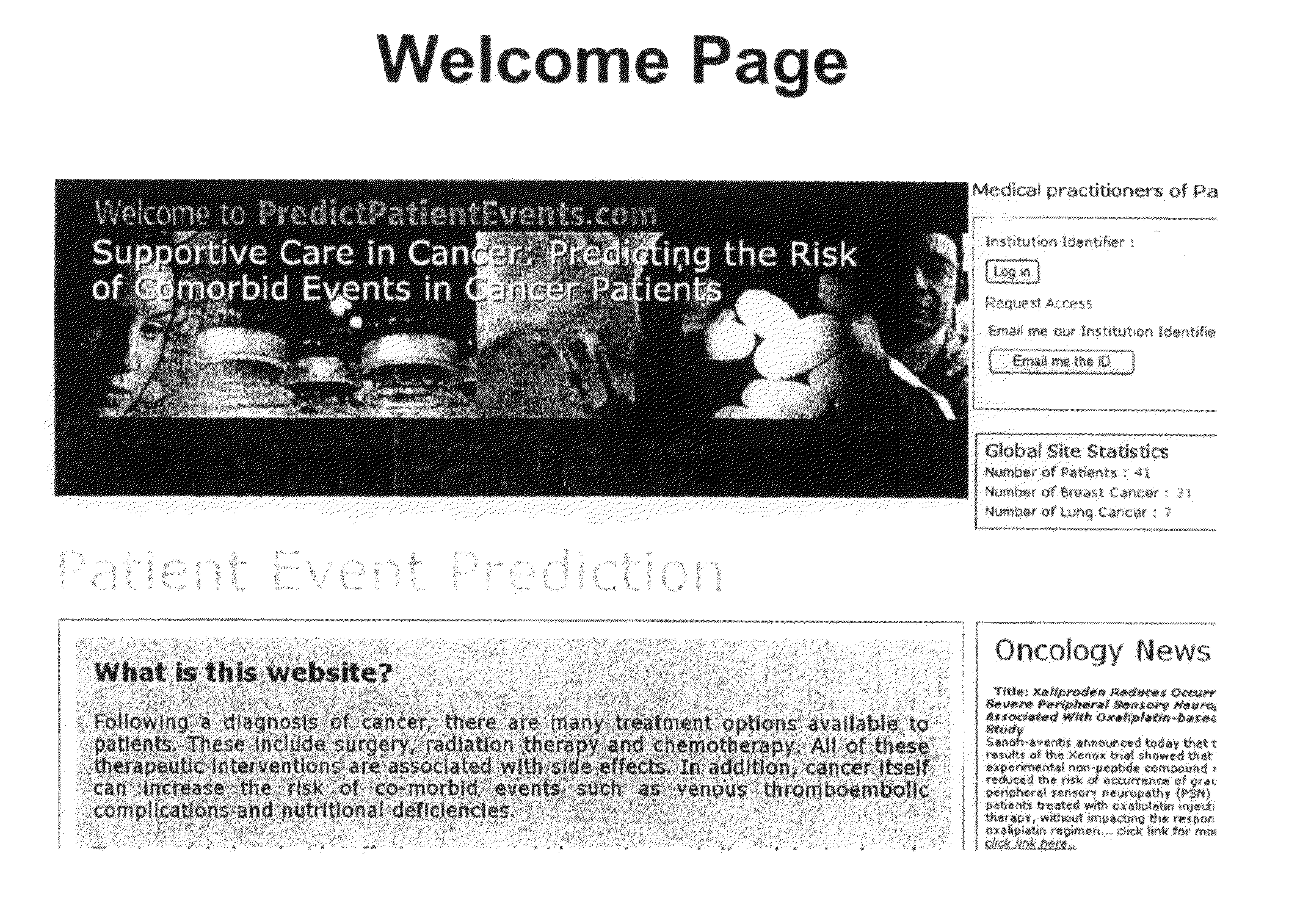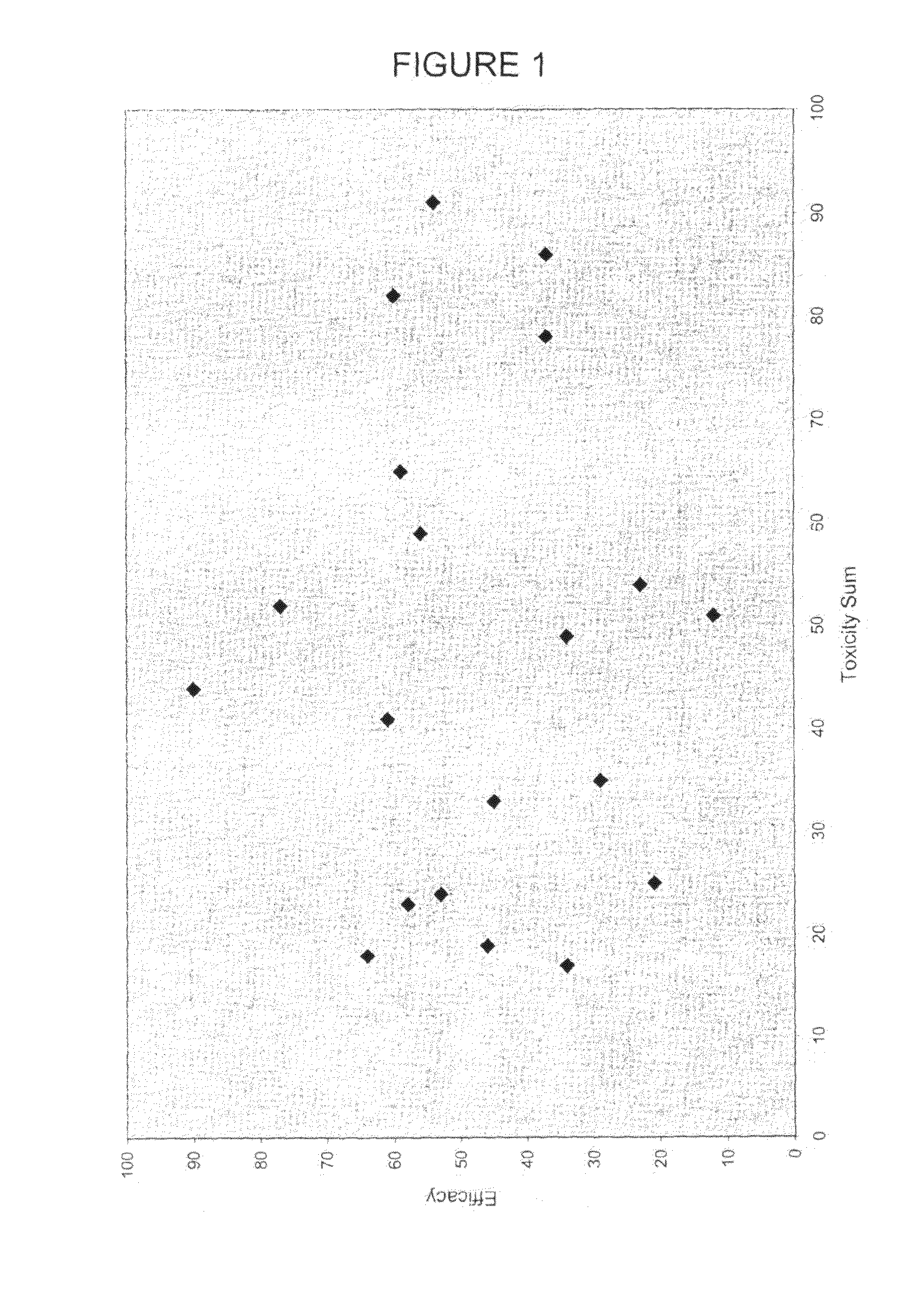System for development of individualised treatment regimens
- Summary
- Abstract
- Description
- Claims
- Application Information
AI Technical Summary
Benefits of technology
Problems solved by technology
Method used
Image
Examples
example 1
The Development and Validation of a Prediction Tool for Chemotherapy-Induced Anaemia in Patients with Advanced Non-Small Cell Lung Cancer Receiving Palliative Chemotherapy
Methods
[0194]Patients: Data used in this Example was collected from NSCLC patients (n=536) with stage Mb or IV who were prospectively evaluated as part of the multicentre European Cancer Anemia Survey (ECAS) conducted in 24 European countries (Ludwig H, et al. Eur J Cancer 2004; 40:2293-2306). The data collection included patient demographic and disease related information, patient weight, body surface area (BSA), World Health Organization (WHO) performance status, disease stage, baseline, pre and post chemotherapy cycle Hb, white blood cells (WBC), absolute neutrophil count (ANC), platelets, concomitant radiation therapy, weight loss and type of chemotherapy. Patients who received prophylactic recombinant erythropoietin were excluded, but patients who received transfusion support were included as this is the stand...
example 2
The Development of a Prediction Tool for Chemotherapy-Induced Anaemia in Breast Cancer Patients Receiving Adjuvant Chemotherapy
Methods
[0213]Patients: The medical records of 331 patients who received adjuvant breast cancer chemotherapy at the Toronto Sunnybrook Regional Cancer Centre from 2000 to 2003 were reviewed. The data collection consisted of patient demographic and disease related information, patient weight, body surface area (BSA) menopausal status, baseline, pre and post chemotherapy cycle Hb, white blood cells (WBC), absolute neutrophil count (ANC), platelets and the use of prophylactic antibiotics and G-CSF. Patients who received prophylactic epoetin alfa were excluded but patients who received transfusion support (3.9% overall) were included as this is the standard of care.
[0214]Chemotherapy Treatment: The intent of this example was to develop a prediction model that would be generalizable to a broad range of breast cancer patients receiving adjuvant chemotherapy. Theref...
example 3
Mathematization of Risk and Benefit for First-Line Treatment of Metastatic Colorectal Cancer: A Graphical Decision Aid for Patients and Physicians
Methods
[0234]A literature review was carried out searching for trials of chemotherapeutic regimens for the first-line treatment of unresectable metastatic colorectal cancer. The most recent, largest, most advanced phase (III vs. II) trials were taken as representative. If several trials were available, all were reported.
[0235]Benefits were median overall survival in months (OS) and progression-free survival / TTP in months (PFS).
[0236]Toxicities were determined as the percent (%) of all analysed / reported patients experiencing the toxicity during the course of the trial. Toxicities assessed were: diarrhoea (Grade 3+4, “severe”), mucositis (Grade 3+4, “severe”), neurological and cutaneous (excluding alopecia) (Grade 3+4, “severe”), vomiting (Grade 3+4, “severe”) or nausea / vomiting or nausea if no vomiting reported, febrile neutropenia (FN) or ...
PUM
 Login to View More
Login to View More Abstract
Description
Claims
Application Information
 Login to View More
Login to View More - R&D
- Intellectual Property
- Life Sciences
- Materials
- Tech Scout
- Unparalleled Data Quality
- Higher Quality Content
- 60% Fewer Hallucinations
Browse by: Latest US Patents, China's latest patents, Technical Efficacy Thesaurus, Application Domain, Technology Topic, Popular Technical Reports.
© 2025 PatSnap. All rights reserved.Legal|Privacy policy|Modern Slavery Act Transparency Statement|Sitemap|About US| Contact US: help@patsnap.com



